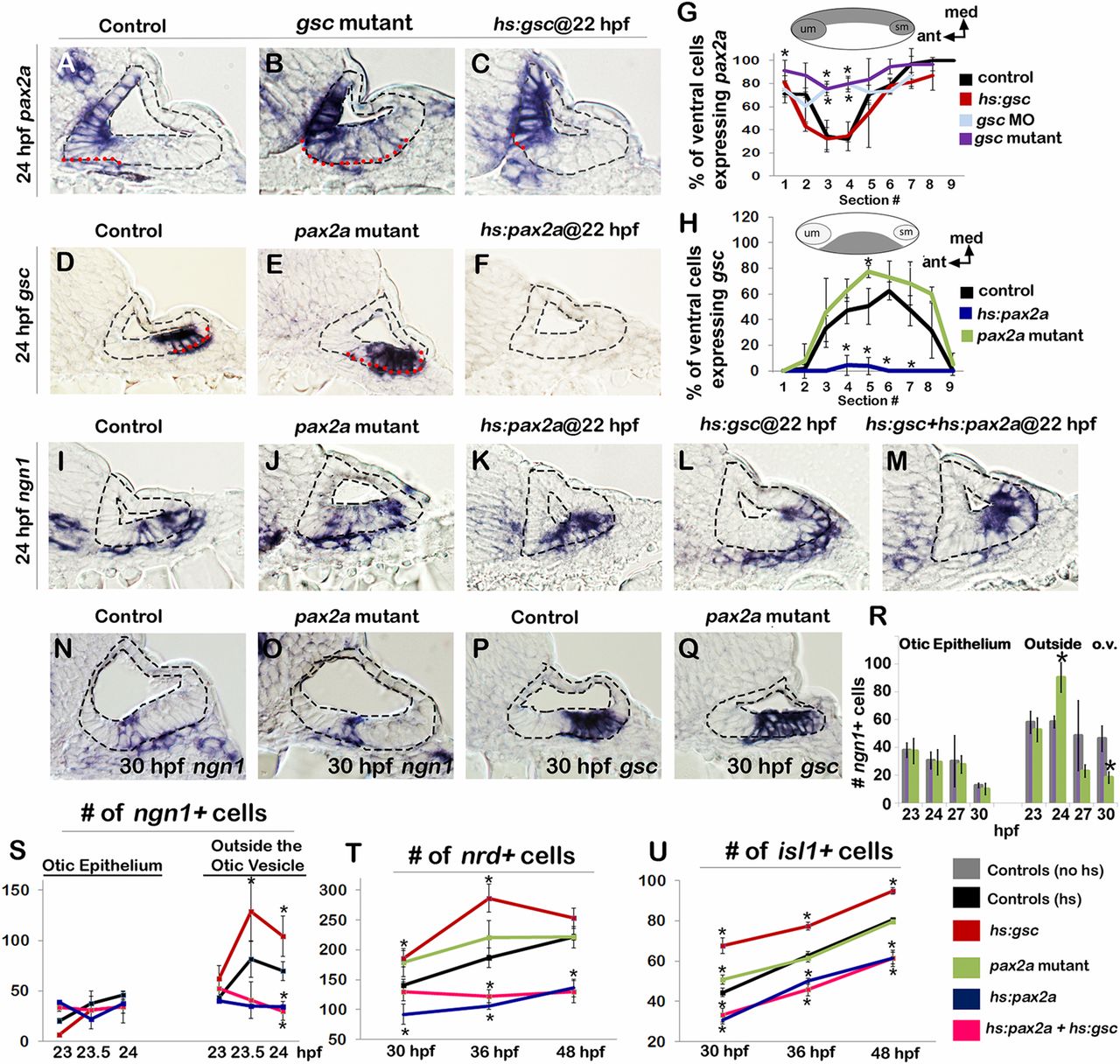Fig. 4
Pax2a opposes the function of Gsc in the otic epithelium. (A–F) Cross-sections (dorsal up, medial left) passing through the widest part of the neurogenic domain of the otic vesicle just posterior to the utricular macula showing expression of pax2a or gsc at 24 hpf (outlined in red) in embryos with indicated genotypes. Control and transgenic embryos were heat shocked at 22 hpf. The otic epithelium is outlined black in each image. (G and H) Means and SD of the percentage of cells expressing pax2a or gsc in successive sections through the otic floor in the embryos with indicated genotypes. Data were obtained by counting the number of stained and unstained cells in each section (n = 3–4 specimens). Illustrations of typical domains of pax2a and gsc (medial up, anterior left) are provided above each graph to help clarify spatial patterns within each section of the otic floor. (I–M) Expression of ngn1 at 24 hpf in embryos with indicated genotypes. Transgenic embryos were heat shocked at 22 hpf. (N–Q) Expression of ngn1 (N and O) and gsc (P and Q) in controls and pax2a mutants at 30 hpf. (R–U) Means and SD of the total number of ngn1+ cells inside the otic epithelium or outside the otic vesicle (R and S; counted on serial sections, n = 3–4), nrd+ TA cells (T; counted on serial sections, n = 3–4) and Isl1+ cells (U; counted on whole mounts, n = 6–12). Control (hs) and transgenic embryos were heat shocked at 22 hpf and fixed at time points indicated. Asterisks indicate significant differences compared with control embryos (P < 0.05). Hs:gsc+hs:pax2a embryos were significantly different from hs:gsc embryos at all time points but showed no statistical difference compared with hs:pax2a embryos. (Magnification: All images, 640×.)

